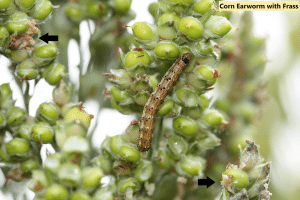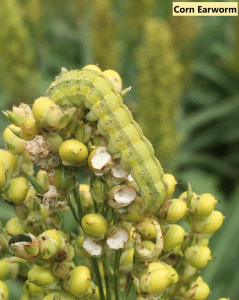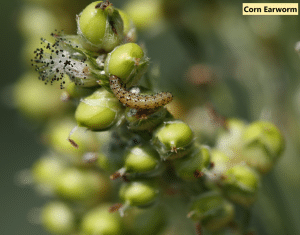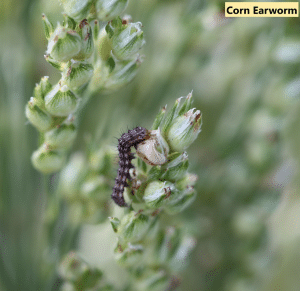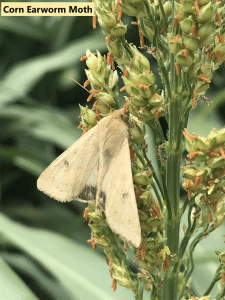Management options
| Insecticide (Trade Names) for CORN EARWORM | Lb Active Ingredient per Acre | Amount Formulation per Acre | Performance Rating |
|---|---|---|---|
| carbaryl (Sevin 80S) | 1 - 2 | 1.25 - 2.5 lb | 5 |
| carbaryl (Sevin XLR 4) | 0.5 - 1 | 16 - 32 oz | 5 |
| chlorantraniliprole (Vantacor 5 SC) | 0.047 - 0.067 | 1.2 - 1.71 | 9 |
| chlorantraniliprole, λ-cyhalothrin (Besiege) | See label | 6 - 10 oz | 9 |
| methomyl (Lannate LV 2.4) | 0.45 | 24 oz | 7 |
| NPV virus (Heligen) * | See label | 1 - 1.4 oz | 6 |
| spinosad (Blackhawk 36% WDG) | 0.038 - 0.074 | 1.7 - 3.3 oz | 6 |
| esfenvalerate (Asana XL 0.66) ** | 0.015 - 0.03 | 2.9 - 5.8 oz | 6 |
| β-cyfluthrin (Baythroid XL 1) ** | 0.01 - 0.02 | 1.3 - 2.8 oz | 6 |
| γ-cyhalothrin (Declare 1.25) ** | 0.01 - 0.015 | 1.02 - 1.54 oz | 6 |
| λ-cyhalothrin (Warrior II 2.08) ** | 0.02 - 0.03 | 1.23 - 1.85 oz | 6 |
| Z-cypermethrin (Mustang Maxx 0.8) ** | 0.01 - 0.025 | 1.76 - 4 oz | 6 |
* NPV virus (Heligen) will only control corn earworm. Applications should be made when larvae are small. Do not apply if most larvae are large or if infestations are well above treatment threshold.
** Pyrethroid insecticides may not provide adequate control of corn earworm or fall armyworm and are not recommended if infestations are well above the treatment threshold.
- Planting early, before mid-May, may help avoid some damage from corn earworm and fall armyworm.
